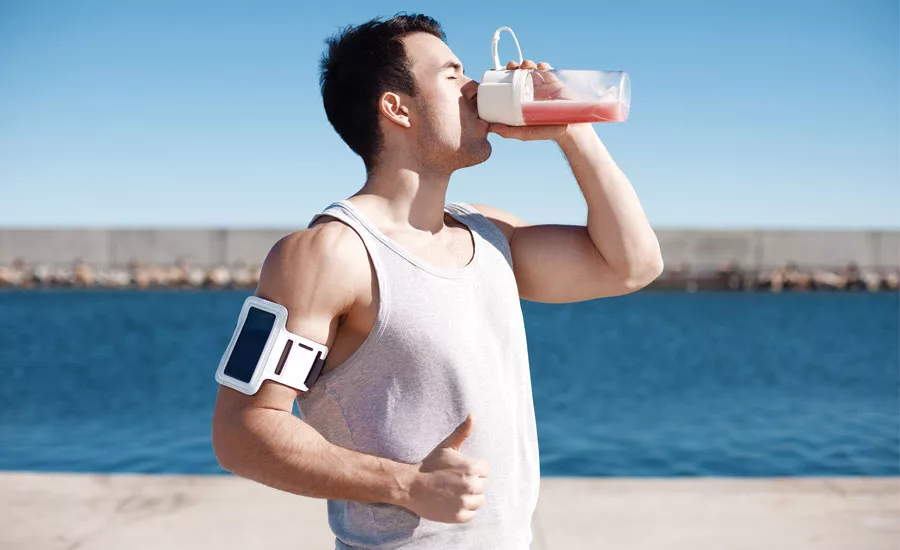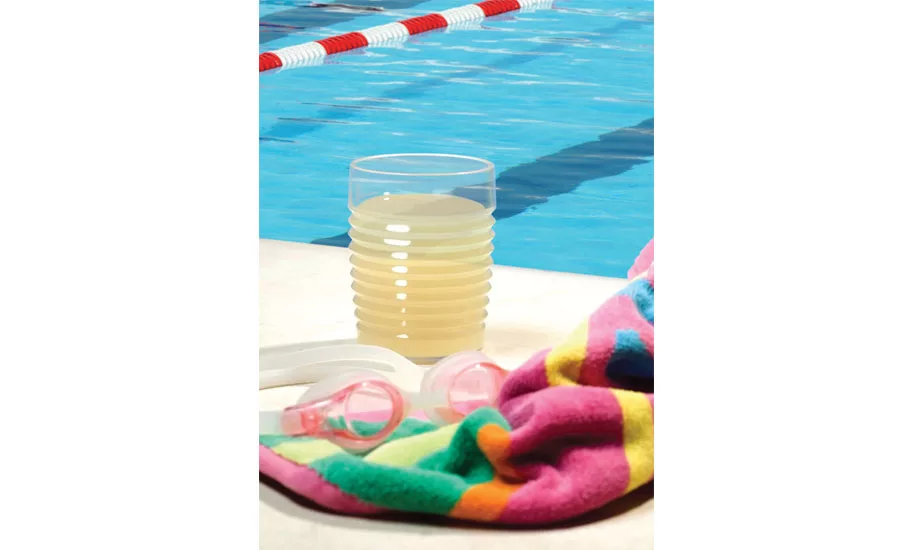Performance beverages show strong sales growth
Natural, clean-label ingredients drive beverage market



When it comes to consumer packaged goods (CPGs), consumers are faced with myriad choices. There are beverages designed to fuel their bodies before a big game, give them energy to power through busy days or to simply help boost immunity. However, experts note that the line between categories can sometimes be blurred, giving beverage-makers even more opportunities for innovation in the global $500 billion non-alcohol beverage market.
“We can see a clear trend among manufacturers not wanting to be pigeon-holed into simply ‘sports performance’ or ‘health and wellness.’ Rather, more and more, the two categories are fusing,” says Elaine Drummond, product technology manager for bio-actives at Glanbia Nutritionals, Carlsbad, Calif. “Sports performance products offer vitamin, mineral and botanical blends to aid general health, recovery and immunity, while health-and-wellness products are more frequently positioned as promoting energy and performance to get the consumer through their day.”
In addition to sports and energy drinks, beverages fortified with protein, vitamins and minerals, and/or electrolytes also are part of the growing performance beverage category. In fact, Chicago-based Euromonitor International notes that fortified beverages, at $60 billion, are just of fraction of the global beverage market, with more than 80 percent of sales emanating from North America, Western Europe and Asia Pacific.
In addition to clean label and functionality, performance drinks are carving out a share of the snacking category, with 80 percent of consumers viewing these on-the-go beverages as perfect, guilt-free snacks, according to Ann Poulsen, business development manager at Arla Foods Ingredients Inc., Basking Ridge, N.J.
“Nutritional drinks and performance drinks are gaining a larger market share of the overall category, which also includes sports drinks and weight-loss drinks,” she says, citing Chicago-based Mintel’s January report “Nutritional and Performance Drinks –US.” “From 2010-2015, performance drinks experienced an 86 percent sales growth, while nutritional drinks saw 67 percent growth.”
The overall performance beverages market grew 38 percent, reaching $13 billion in 2015, she adds.
Unique nutritional profiles
“Health-and-wellness trends are spurring formulations that have unique nutritional profiles as well as innovative delivery systems, flavor profiles and synergies with other liquid components,” says Gwen Bargetzi, director of marketing at Hilmar Ingredients, Hilmar, Calif.
“A good example are the coconut waters,” she continues. “Coconut water is a natural rehydration source with electrolytes and flavors. Companies are combining the benefits of coconut water with protein, added vitamins and minerals, and flavors like chocolate. These hybrid, functional beverages address several markets, including sports, children’s health and general fortification.”
Consumers also show high interest in natural and clean-label products, while shying away from foods and beverages containing preservatives, artificial colorings and intense sweeteners, according to Jon Peters, president, Beneo Inc., Morris Plains, N.J., citing 2015 research conducted by Chicago-based Ipsos.
“Ingredients from natural sources are preferred to artificial ingredients,” Peters says. “… Manufacturers are reacting to this growing demand and are using more natural ingredients: every fourth product launch between 2014 and 2015 in the category carried either a ‘natural’ claim or a ‘no additives/preservatives’ claim.
“Consumer research shows that about one-third of the U.S. population is concerned about fatigue,” he continues. “… This is a concern for a wider audience than just athletes. … Consumers are looking for real energy, in the form of glucose since our body and brain run on it, from natural sources that keep their body and brain running in a healthy manner.”
The trend for more natural and clean-label products is reflected in the release of performance drinks that are re-energizing the market, Peters says.
For example, Miami Beach, Fla.-based The Energy Drink Co. launched Dark Dog Organic, which is an energy drink aimed at the health-conscious consumers, while Edison, N.J.-based Nth Degree Innovations Inc. offers a low glycemic index-tested enhanced sports drink along with energy drinks, juice-based drinks and dairy drinks that promote nutritious energy through its utilization of Palatinose, an isomaltulose.
Natural and organic, protein fortified, added sugar, vitamin and mineral fortification, and nutraceutical beverages, including ingredients that boost immunity, are other trends impacting the performance beverage market, says Chicago-based Archer Daniel Midland’s (ADM) Director of Strategic Marketing for Beverage Matt Drew.
“As consumers continue to incorporate better-for-you beverages into their diet, we anticipate seeing an increase in the percentage of consumers drinking sports and energy drinks globally,” he says.
ADM offers a wide range of beverage ingredients, including nutritive and non-nutritive sweeteners, natural flavors and colors, and proteins, along with beverage/brewing mixology expertise and rapid prototyping and development, he adds.
The impact of nutrition facts label
Experts note that the U.S. Food and Drug Administration’s new dietary guidelines and recent changes to the nutrition facts label will further impact the performance beverage market.
“This puts more pressure on the ingredient suppliers but also the formulators to source whole-food based and ‘natural’ ingredients that fit into their performance products,” says Alice D. Hirschel, commercial development specialist at Innophos Nutrition Inc., North Salt Lake, Utah.
Consumers also want organic products and these ingredients, unlike natural ingredients, have a definition for inclusion on the beverage label, Hirschel adds.
“The ingredient must be on a list defined in the Code of Federal Regulations,” Hirschel explains. “It is much easier to define an organic product, as there are limits as to what can be used. The key to organic is that up to 5 percent may be non-organic components. At this point, especially in the performance beverage arena, you will find both.”
Glanbia’s Product Technology Manager for Bio-actives Sarah Flynn notes several ingredients that support endurance and other physical activities, including caffeine, natural form and derived from herbals and teas as well as synthetically produced; electrolytes, like magnesium, potassium, sodium and calcium; antioxidants, including vitamins A, C and E; protein, commonly whey protein; B vitamins and amino acids, including taurine, L-carnitine, branch-chained amino acids (BCCA); green tea; and other polyphenol-containing botanicals.
On the other end of the spectrum, recovery ingredients, including protein, BCCA and carbohydrates, help improve immunity and digestion, while phospholipids (PS and Alpha-GPC) can improve overall recovery and mood, she adds.
“Vasodilators are especially important in sports nutrition and can be incorporated into many ready-to-drink beverages,” Flynn explains. “These work to enhance nitric oxide production by widening the blood vessels and increasing blood flow and oxygen delivery.”
Sugar also is crucial to boost energy, Beneo’s Peters notes. “U.S. consumers [are starting] to understand that not all sugars are alike. While one out of four consumers consider sugar as an energy source, many of them … don’t want the ‘crash and burn,’” he says. “… Our next generation sugar, Palatinoise (isomaltulose), delivers a balanced release of energy over a longer period of time. … It has been shown to have a sustained effect on normal blood glucose levels compared to other fully digestible carbohydrates.”
Performance-packed protein
Whey protein hydrolysates also are gaining ground among consumers for their ability to aid in digestion and muscle recovery, Arla Food’s Poulsen says.
Designed for sports nutrition beverages, the company has developed Lacprodan HYDRO.365, an UHT-stable hydrolyzed whey protein that improves performance and recovery for elite-level athletes and everyday consumers, she says.
“Hydrolyzed whey proteins are rich in di- and tri-peptides and are more rapidly absorbed in the small intestine compared with free amino acids and intact protein,” Poulsen explains. “… People are looking for high-quality beverages that taste good, are dense in nutrients and intrinsically wholesome.
“Not only is whey protein the highest-quality protein source available, but it is clean label,” she continues. “… Sports nutrition companies are placing renewed focus on transparency. Innova Market Insights points to chia and beetroot as two ingredients perceived as healthful which are now being used in sports nutrition powers.”
Keeping pace with consumer demand for functional beverages that increase endurance and physical performance, Ham Lake, Minn.-based Bioenergy Life Science Inc. offers its patented Bioenergy Ribose for beverage formulations.
“D-Ribose is the backbone of our ATP structure and feeds our cells with energy by allowing us to stay in the game longer,” Bioenergy’s Regional Director Marianne McDonagh says. “Our bodies naturally produce ribose, but your demand is so much higher compared to the supply; so adding Bioenery Ribose to your beverage will speed up this natural process. … It is slightly sweet, fully soluble in any liquid and is backed by clinical studies.”
When working with performance-supporting ingredients like protein, which can be difficult to dissolve, beverage formulators often need to identify a good stabilizing/emulsifying system, experts note.
“[D]epending on the processing conditions, there may be a need to stabilize the protein, disperse and hydrate the protein or solubilize the protein in the liquid system,” says Amr Shaheed, Innophos’ commercial development manager for beverages.
Because whey protein often is used in functional beverages, phosphates can be used to help maintain the product texture and quality. “For example, phosphates like DKP are used to buffer the pH of the beverage in order to maintain functional, soluble proteins,” Shaheed says. “… When the right system is used, the manufacturer can run longer with the assurance that they will deliver a quality product.”
Beyond traditional sports and protein drinks, experts note that the beverage industry is becoming increasingly inventive in its use of performance ingredients. For example, there was a 20 percent increase of coffees that contain protein, Glanbia’s Flynn notes.
“Heat-stable proteins now exist that can be used in hot beverages, single-serve coffee and tea cups and creamers, allowing both the sports-focused and average consumer access to protein in new ways,” Flynn says. “Smoothies, shots and cold-pressed beverages are also avenues for manufacturers to explore.”
Shaheed adds: “When it comes to the development and formulation of performance beverages, … the identification of ingredients can be sped up by consulting industry experts who understand the functionality of ingredients as well as their interaction and synergy with other beverage components.”
Looking for a reprint of this article?
From high-res PDFs to custom plaques, order your copy today!




